Should Seniors Track Their Health Daily? Benefits of Hybrid Care
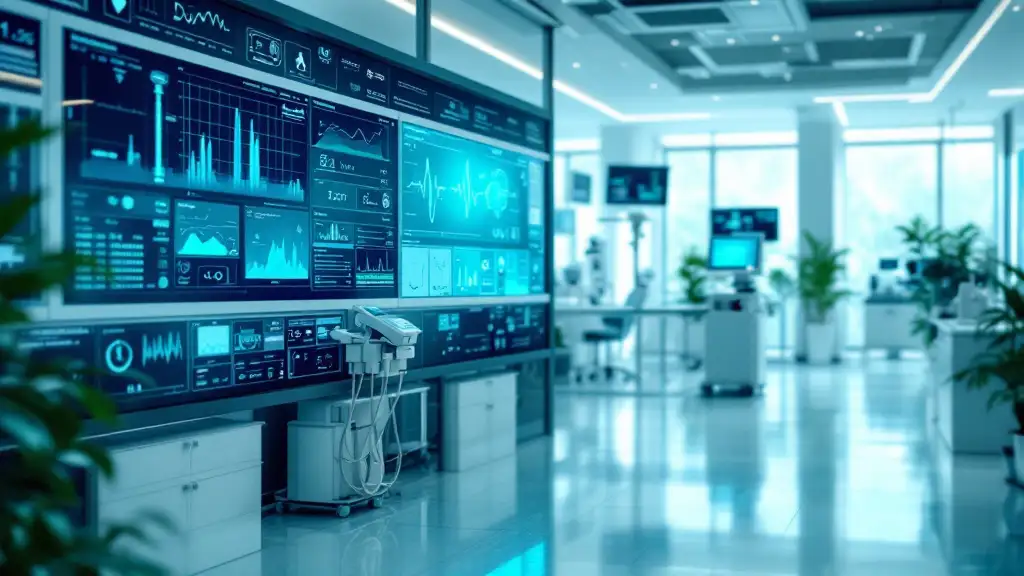
The Evolving Landscape of Senior Healthcare
As the global population ages, the need for innovative healthcare solutions tailored to seniors’ unique needs has never been more urgent. With advances in technology, hybrid care models that integrate in-person visits with telehealth, remote patient monitoring, and digital health tools are transforming how older adults manage their health, maintain independence, and enhance their quality of life. This article explores the profound benefits of daily health tracking and the pivotal role of hybrid healthcare approaches in fostering safe, effective, and patient-centered care for seniors.
The Significance of Daily Health Tracking for Seniors
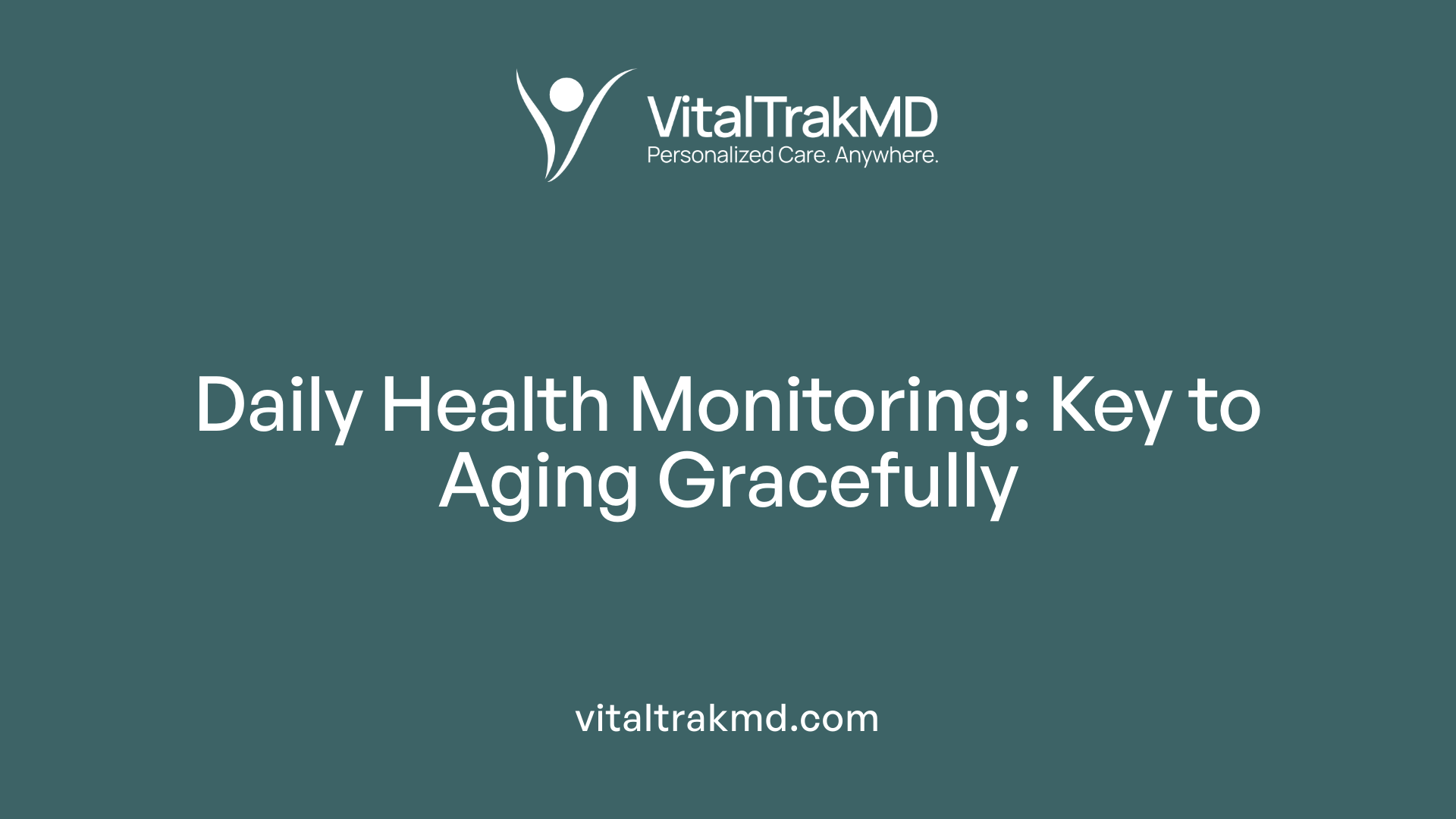
What are the benefits of seniors tracking their health daily and the role of hybrid care models in enhancing health management for older adults?
Daily health tracking offers numerous advantages for seniors. By regularly monitoring vital signs such as heart rate, blood pressure, and blood glucose levels, seniors can catch health issues early. This early detection allows for quick medical interventions that can prevent the worsening of chronic diseases like diabetes, hypertension, and heart conditions.
Furthermore, continuous monitoring helps seniors participate actively in their healthcare. With real-time data, they can better understand their health patterns, adhere to medication schedules, and make lifestyle adjustments informed by their own health trends.
Hybrid care models—combining in-person visits, telehealth consultations, and digital health tools—play an essential role in this process. These models provide ongoing support, foster better communication between seniors and healthcare providers, and reduce the need for frequent in-clinic appointments.
During events such as pandemics, remote health management becomes even more crucial. Telehealth and digital monitoring ensure that seniors can receive consistent care without risking exposure. Overall, integrating daily health tracking within hybrid care systems promotes better health outcomes, personalized care, and sustained independence for older adults.
The Role and Impact of Hybrid Care Models in Senior Healthcare
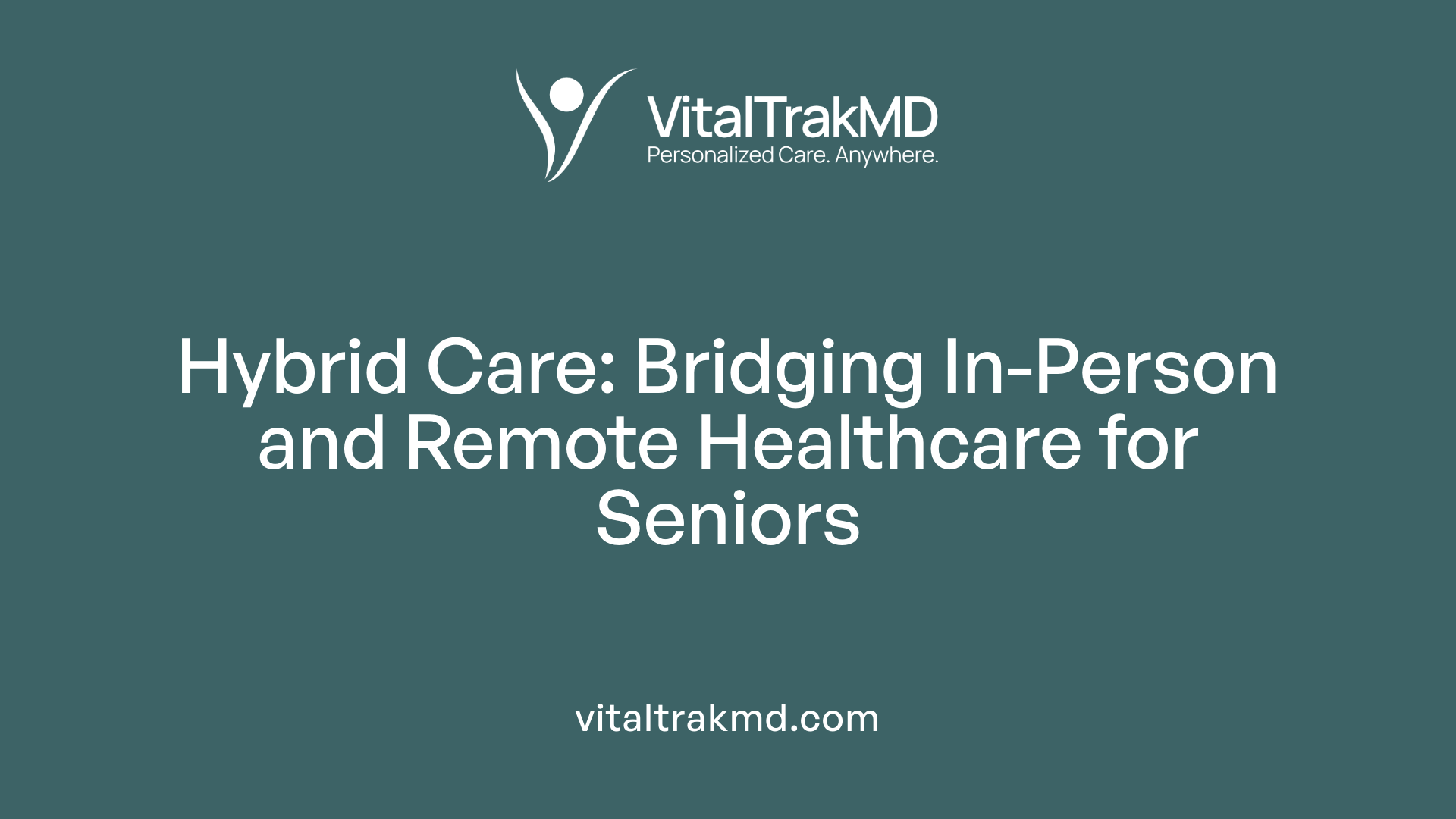
What are the advantages of telehealth and remote patient monitoring in supporting aging in place?
Telehealth and remote patient monitoring play a crucial role in helping seniors live independently and comfortably at home. These technologies provide easy access to healthcare professionals through virtual visits, eliminating the challenges of transportation and physical mobility issues. Seniors can undergo remote monitoring of vital signs such as heart rate, blood pressure, and oxygen levels using wearable devices and smart sensors, enabling timely detection of health concerns.
The ability to conduct virtual screenings for social determinants of health (SDOH) ensures comprehensive care without the need for in-person visits. This not only enhances early intervention but also reduces hospital admissions by catching issues early. Moreover, remote symptom tracking supports effective management of chronic illnesses like diabetes and COPD, leading to better health outcomes.
Supporting aging in place, these digital innovations ease caregiver responsibilities by providing real-time data and alert systems that quickly notify caregivers of emergencies or health changes. They also foster increased independence since seniors can access specialists and routine care remotely, maintaining their quality of life. The most effective care models blend in-person visits with telehealth services, creating a balanced, accessible, and patient-centric healthcare environment that empowers older adults to remain safe and autonomous at home.
Digital Tools Promoting Safety, Awareness, and Social Connectivity
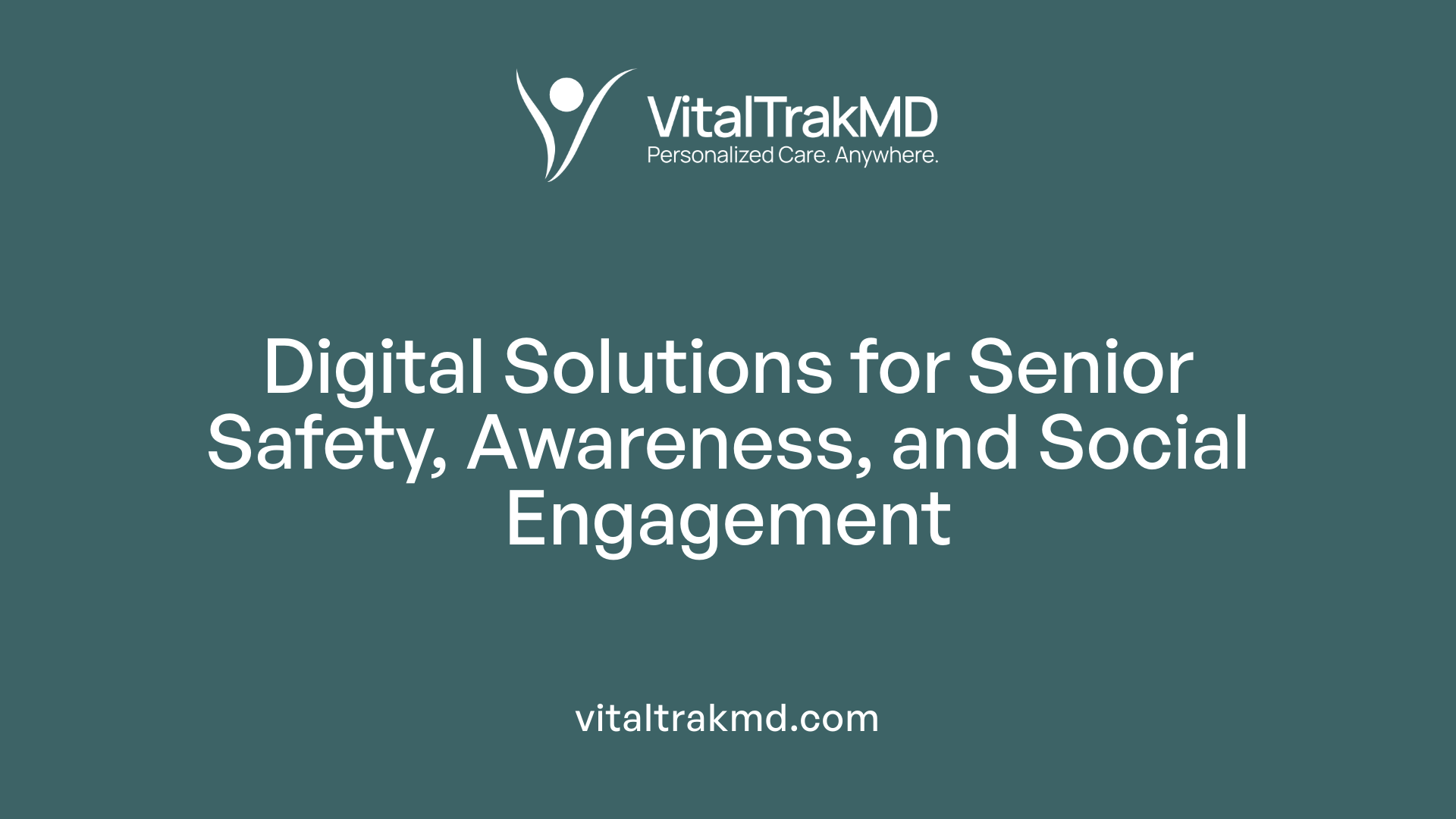
How can digital health tools promote health awareness, safety, and social connection among seniors?
Digital health technology has become an essential part of modern senior care. These tools help older adults stay informed about their health and maintain independence. For instance, wearable devices such as fitness trackers and medical alert watches monitor vital signs like heart rate, oxygen saturation, and blood glucose. These devices can send immediate alerts to caregivers or healthcare providers if anomalies occur, ensuring quick response times that can prevent serious health complications.
Smart home systems further enhance safety by integrating environmental sensors—detecting movement, temperature changes, or emergencies like fires or gas leaks. Automated lighting, voice-activated controls, and remote-controlled thermostats allow seniors with mobility challenges to manage their environment easily.
Social engagement is also greatly supported through virtual social platforms and simplified communication devices. Video call apps, social networks, and VR experiences enable seniors to connect with family and friends from the comfort of their homes. These platforms help combat loneliness, which is common among the elderly, and encourage ongoing social interaction.
Overall, digital health tools empower seniors to be proactive about their health, provide safety and security, and foster meaningful social connections. They also support early detection of health and mental health issues, allowing timely intervention, which is crucial for improving quality of life.
| Technology Type | Functionality | Impact on Seniors |
|---|---|---|
| Wearable Devices | Heart rate sensors, fall detection, glucose monitoring | Provides real-time health data, alerts for emergencies |
| Smart Home Technologies | Environmental sensors, voice controls | Enhances safety at home, manages environment easily |
| Virtual Social Platforms | Video chatting, social apps | Maintains social bonds and reduces loneliness |
| Emergency Alert Systems | Help buttons, GPS trackers | Ensures quick assistance in emergencies |
| Mental and Cognitive Support | Brain-training apps, VR experiences | Supports mental health and cognitive function |
These digital tools collectively help seniors stay aware of their health status, remain safe at home, and stay connected socially, making aging-in-place safer and more fulfilling.
Supporting Chronic Disease Management at Home with Technology
How can technological solutions support at-home health monitoring and help manage chronic diseases in seniors?
Technology offers numerous ways to enhance health management for seniors living at home. Remote monitoring devices are pivotal, as they automatically collect vital signs such as blood pressure, blood glucose, and oxygen saturation. This data is transmitted in real-time to healthcare providers, allowing for proactive, personalized adjustments to treatment plans without the need for frequent in-person visits.
Telehealth consultations further support seniors by enabling virtual doctor visits. These platforms facilitate ongoing medical management, medication adjustments, and direct communication with healthcare professionals, all from the comfort of home. This reduces travel burdens and helps maintain regular healthcare engagement.
Wearable sensors, like smartwatches or fitness trackers, track vital signs continuously. They offer seniors and caregivers immediate feedback on heart rate, activity levels, and other health metrics, fostering better adherence to medications and lifestyle modifications. Many wearables can alert users or caregivers of irregularities, enabling prompt action.
Smart home health technologies also play a vital role. Automated lighting, voice-activated assistants, and medication dispensers help seniors maintain independence while ensuring safety. These systems can remind users to take medications on time, monitor environmental conditions, and provide alerts in emergencies.
Advanced analytics powered by artificial intelligence (AI) further bolster chronic disease management. AI-driven predictive analytics analyze the data collected from devices and sensors to identify early warning signs of health deterioration. These insights support preventive care, enable early interventions, and help reduce hospitalizations, ultimately making chronic disease management more efficient.
Together, these technological innovations create a comprehensive ecosystem that supports seniors’ health at home, promotes independence, and improves overall quality of life. They help catch potential issues early, tailor treatments to individual needs, and ease the burden on caregivers and healthcare systems.
| Technology | Functionality | Impact |
|---|---|---|
| Remote monitoring devices | Track vital signs, transmit data to providers | Early detection, personalized care |
| Telehealth consultations | Virtual doctor visits | Ongoing management, reduced travel |
| Wearable sensors | Continuous vital sign monitoring | Real-time feedback, quicker response |
| Smart home health technologies | Automated medication, environmental monitoring | Increased safety, independence |
| AI-powered predictive analytics | Data analysis for early warning signs | Preventive care, fewer hospitalizations |
These combined technological tools create a responsive, patient-centered approach that empowers seniors in managing their health effectively from home.
Wearable and Smart Home Technologies for Enhanced Senior Safety and Independence
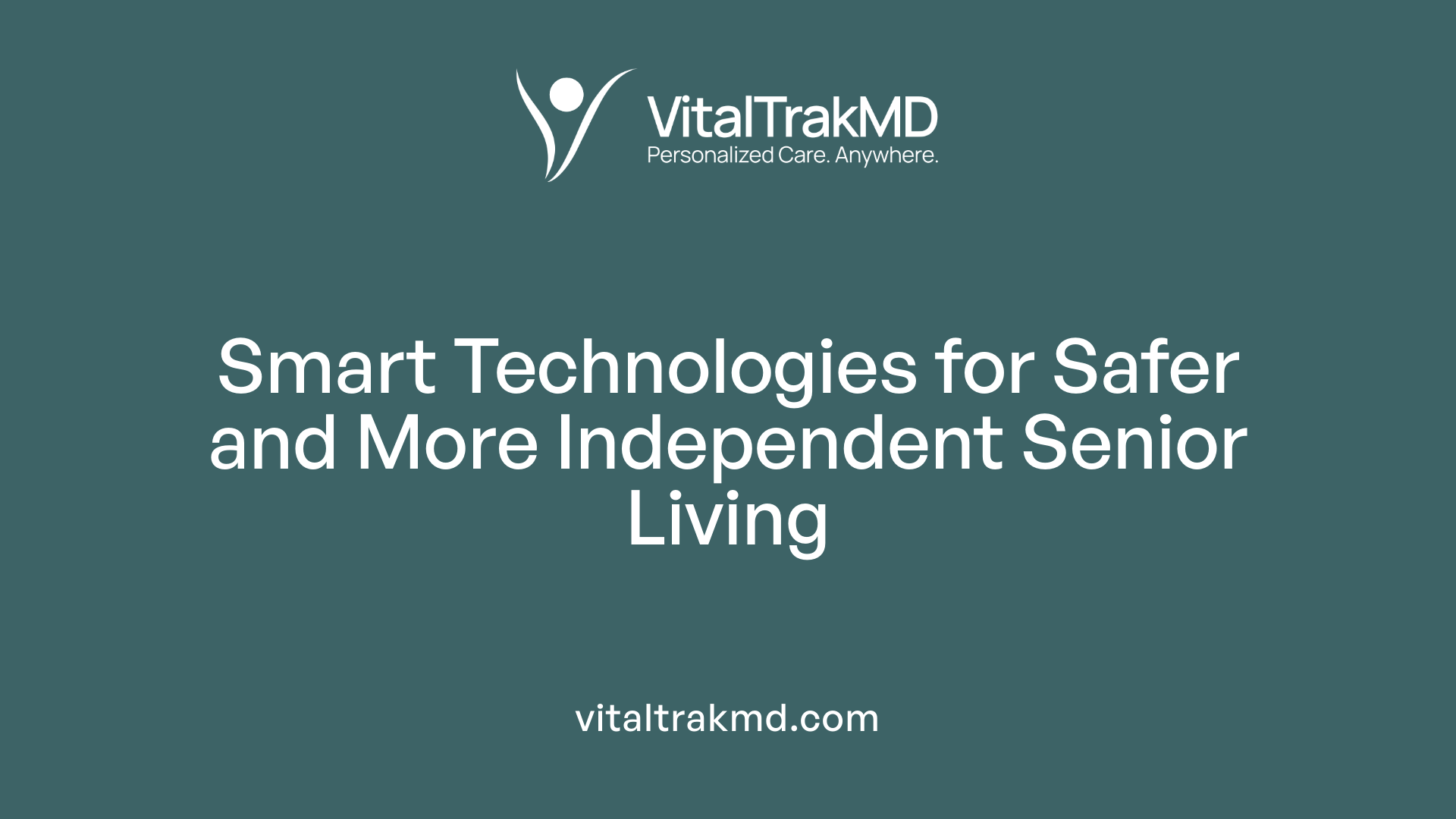
How do wearable health devices, smart home technologies, and remote monitoring impact senior health, safety, and independence?
Wearable health devices, smart home sensors, and remote monitoring systems play a vital role in improving the lives of older adults. These advanced tools continuously track vital signs like heart rate, blood pressure, oxygen saturation, and blood glucose levels, providing real-time data to both seniors and their healthcare providers. This constant flow of information allows for early detection of potential health issues, enabling prompt medical intervention that can prevent complications.
In addition to health monitoring, these technologies significantly enhance safety. Fall detection sensors and emergency alert devices allow seniors to quickly summon help during emergencies, reducing the risk of injury and providing peace of mind for families and caregivers.
Smart home environments equipped with environmental sensors contribute to safer living conditions by automating lighting, maintaining optimal temperature and humidity levels, and alerting residents or caregivers to hazards like smoke or gas leaks. Furthermore, automation and environmental controls make daily routines easier, promoting independence.
Location tracking—via GPS-enabled devices and wearable trackers—supports the safety of seniors with cognitive impairments such as dementia. Caregivers can locate wandering seniors swiftly, reducing the risks associated with disorientation or accidental wandering.
Personalization algorithms further enhance these systems by tailoring alerts, reminders, and monitoring thresholds to individual health profiles, preferences, and daily routines. This customization makes technology more accessible and less intrusive, thereby encouraging consistent use.
Together, wearable devices, smart environment sensors, and remote health monitoring foster an environment that supports aging in place. They enable seniors to manage their health better, remain independent longer, and stay connected with caregivers and healthcare providers, ultimately creating a safer, more responsive living environment.
Importance of Hybrid Care Approaches for Enhancing Quality of Life

Why are technology-driven hybrid care approaches important for improving seniors' quality of life?
Hybrid care combines the best of in-person health services with remote technologies like telehealth, virtual monitoring, and digital health tools. This approach provides personalized health support that adapts to the unique, changing needs of older adults.
With hybrid models, seniors can maintain regular contact with healthcare providers without needing frequent trips to clinics. This reduces stress, saves time, and helps in early detection of health issues through continuous monitoring of vital signs and symptoms.
These systems also promote preventive care, allowing interventions before minor problems turn serious. For instance, remote sensors can alert caregivers if a fall occurs or if blood sugar levels are abnormal, enabling quick response.
Beyond physical health, hybrid care supports mental and social well-being. Connecting seniors to virtual community groups, family video calls, and social activities counters loneliness and isolation.
Moreover, these models encourage independence. They empower seniors to manage their health through user-friendly apps and devices like smartwatches, which track activity, remind medication, and even spot emergencies.
Community and family engagement is strengthened by digital platforms that facilitate real-time updates and collaborative care planning. Older adults, families, caregivers, and health providers can share information seamlessly for coordinated support.
Overall, tech-enabled hybrid care improves safety, health management, social connectivity, and emotional peace of mind. It helps seniors age in place comfortably, preserving dignity and quality of life well into later years.
This comprehensive approach addresses physical, mental, and social health, making aging gracefully at home a tangible goal. As technology advances, these models will only become more sophisticated, offering tailored, holistic care that adapts to each senior’s lifestyle and health status.
Innovations and Future Directions in Senior Healthcare Technology
What future developments and innovations in senior care technology could facilitate daily health tracking and improve healthcare delivery?
The future of healthcare for older adults is likely to be shaped by significant technological innovations designed to make health tracking more seamless, proactive, and personalized. Integrating artificial intelligence (AI) and machine learning (ML) will be central to this evolution. These advanced algorithms can analyze vast amounts of health data to predict potential health issues before symptoms emerge, enabling early intervention and tailored treatment strategies aligned with each senior's unique genetic and health profiles.
Besides AI and ML, advanced wearable sensors will play a critical role. These unobtrusive devices, embedded in smartwatches, clothing, or other accessories, will continuously monitor vital signs like heart rate, blood pressure, oxygen saturation, and activity levels. Complemented by sensor networks within smart homes that track mobility and behavioral patterns, these technologies will provide real-time health insights—alerting caregivers and healthcare providers immediately to concerning changes.
Smart home automation will further enhance daily living. Voice-controlled assistants, environmental sensors, automatic lighting, and fall detection systems will create safer, more comfortable environments. The integration of these features with health monitoring data will allow seniors to live independently longer, with safety interventions initiated automatically when needed.
Robotic assistance is another promising frontier. Mobility aids like robotic walkers, as well as social robots capable of companionship and mental stimulation, will support older adults in daily tasks and emotional well-being. These robots can remind seniors about medication, provide conversation, or assist with mobility, reducing reliance on human caregivers and easing the burden on family members.
Complementing physical devices, predictive analytics will optimize healthcare resource use and improve diagnostic accuracy. By analyzing patterns in health data, predictive models can forecast health risks, personalize care plans, and streamline telehealth services, reducing hospital visits and improving overall quality of life.
Altogether, these innovations promise a future where senior healthcare is more autonomous, responsive, and tailored—empowering older adults to maintain independence and well-being with the help of smarter, interconnected technologies.
Shaping the Future of Senior Healthcare
The integration of daily health tracking tools within hybrid care models emerges as a transformative approach to senior healthcare. These technologies foster greater independence, enhance safety, and enable proactive management of health conditions, ultimately improving quality of life. As innovations continue—ranging from AI-driven predictive analytics to robotics—the future of senior care promises a more personalized, accessible, and supportive environment where aging at home becomes not only feasible but preferred. Embracing these advancements demonstrates a commitment to dignified, patient-centered care, empowering seniors to live healthier, safer, and more connected lives.
References
- 4 Benefits of Telemedicine for Seniors - ChenMed
- Comparing In-Person Only, Telemedicine Only, and Hybrid Health ...
- Hybrid individual event monitoring enhances resident safety and ...
- The Benefits of Smartwatches for Seniors
- Can Smart Home Technologies Help Older Adults Manage Their ...
- Benefits of Health Monitoring at Home
- Top 10 Benefits of Telehealth for Older Adults - VERVE COLLEGE
Recent articles
Want to Feel Better and Live Healthier?
Join hundreds of patients taking control of their health with personalized care that fits their life – not the other way around.
Rated 4.8/5 by 32+ customers







